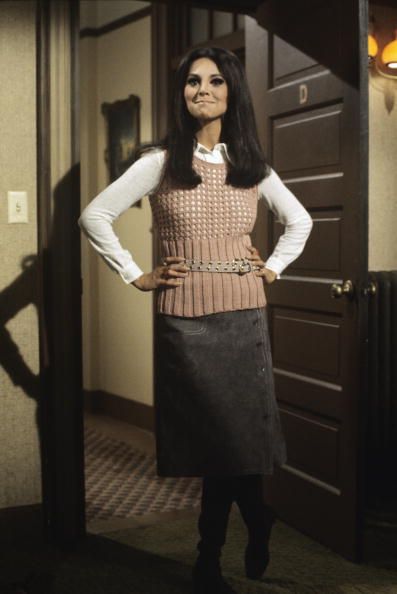In this monthly “Behind the Scenes” series, we are learning about the people who work behind the camera and help make the show more realistic. It was very hard to find information about wardrobe designers. What these jobs look like vary by show. Some shows have actual designers like Marilyn Lewis on That Girl or Jean Louis on Green Acres, who we learned about in previous blogs. Some shows have a dresser who helps take care of costumes and keeps them in good condition. I could not find anyone listed in the wardrobe or costume departments for The Partridge Family. Perhaps they only had shoppers who purchased the items for the cast each season.
One thing I noticed and liked about The Partridge Family that was similar to My Three Sons was that each cast member got a wardrobe for the season, and they wore the same items on various episodes. You can definitely get a feel for their favorites by how many times they appeared throughout the year. I think this makes the characters more realistic. Like us, they only have so many clothes in their closet, and they wear them over and over, unlike current shows where the wardrobes are new for each episode.*

I chose to look at the clothing for The Partridge Family for a few reasons. Obviously, I can relate to them since I had those same items in my closet during that time. I can remember wearing bell bottoms, flowered or checked shirts with pointy collars, and carrying macramé purses. My favorite outfit during this time was a pair of bell bottoms with maroon and navy flowers that I wore with a navy blouse with a pointed collar and cuffs with buttons on them. I also remember a pink and white gingham skirt and blazer that I wore with a black bodysuit. My favorite skirt had a black background with jewel-toned flowers all over it. It had a slit up the side of the skirt, and I wore it with a black top. Another reason, I picked the Partridges to analyze style was because there were a variety of characters to dress—teens, older adults, kids, as well as a singing group.

The clothes The Partridge Family members wore fit with the times. They were a great representation of the clothing of the 1970s. In That Girl, Ann Marie’s wardrobe was almost like another character. Many people paid special attention to what she wore. In shows like The Brady Bunch or The Partridge Family, clothes were appropriate to the time and trendy, but they didn’t take center stage. They just reflected what everyone was wearing and made the characters more realistic.

So, what were the fashions during this time? There was not “a” predominant style in the 1970s. Walking down a city street, you could observe Indian block print dresses, tie-dye shirts, hip-huggers, mini skirts in bold patterns, and peasant type dresses in muted colors.

There were tons of options for dresses: long or short, single pastel or bold multi colors, solid or patterned, sleeveless or long-sleeve, jumpers or long, flowing skirts.

Men’s pants might be worn low or higher waisted. They might be cuffs or bell bottoms. They might be corduroy or denim.
Teen Girls and Young Adults
The Hippie themes carried over from the 1960s into the early 1970s. Many people were wearing bell bottoms, maxi dresses, granny dresses often trimmed with leather or lace, peasant blouses, and ponchos. There was not a hemline for the era; both maxi and mini-skirts were popular.

Culottes debuted in the mid-1970s. Colors tended to be earthy in nature: apple green, mauve, tangerine, mustard, and copper. Neutral solid colored pants were always appropriate, but jeans began to gain popularity in the mid part of the decade. Denim also showed up in jumpers. Accessories included chokers, dog collars, headbands, floppy hats, and jewelry made of feathers, shells, and leather.

Peace signs showed up in a lot of jewelry. Make up tended to look natural with just a hint of blush or lip gloss. Later in the decade, the disco look would bring in shimmery and bolder colors. Along with leather or macramé purses, younger women carried blue suede or tapestry printed bags. Sunglasses were often worn.
Laurie’s clothing was never too revealing or wild. She typically wore dresses to school and on dates but could also be seen wearing solid colored pants with blouses or tunics. She wore a lot of orange. For most of the series, she had long hair parted in the middle.



The photo above shows Laurie’s polka dotted skirt and top. We can also see Danny’s blue and yellow striped top. He had a variety of striped tops he wore as did Chris. The patterned bold-colored shirt Shirley has on was one of her favorites. She wore it on 6 or 7 shows during Season 2.
Older Women
Older women tended to wear pleated skirts with blazers or pantsuits. Dresses tended to hit the knee or a bit longer. Long skirts were also in vogue—some with loud patterns and colors. Sweaters and sweater vests were commonly worn with pants and skirts. American pride colors of navy, white, and red were popular as were pastels like baby blue, mint green, or bubblegum pink as well as neutrals in the camel or gray family. Polka dots were often added to blouses or dresses.
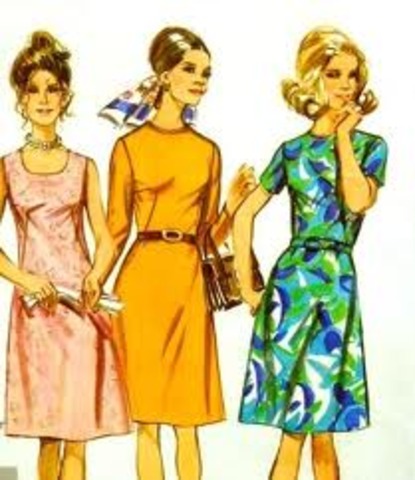
Everyone had at least one robe and some nightclothes were more casual for wearing around the house. Scarves were often worn with tops or dresses. Make up often included a pinky or peachy blush, green or blue eye shadow, and orange lipsticks.

Most women tended to wear more gold than silver. Bangles, button earrings and hoops were go-to pieces. Flower brooches could often be seen on blazer lapels. Quilted handbags with large wooden rings worked for purses.
Shirley wore a lot of skirt and blazer outfits in pastel shades in Season 1. This made sense because she had been working as a bank teller until they became singing stars. She also wore knit short-sleeved tops with scarves often.

During the other three seasons she wore a lot more pantsuits, often with blazers.

Many times she wore a pin on her lapel, and, in one episode, the plot concerns a pin Danny found and gave her. Her favorite colors seemed to be red, white and blue or pink.
Teen Men and Young Adults
Polyester was the primary material for pants and tops. Bright colors were quite popular early, but by 1975, more neutral colors had taken over, especially browns. Shirts had pointy collars and often were flowered or had geometric patterns or paisleys. Blue jeans were popular with everyone but especially teen males.

Denim would be made into jackets and suits also. Approaching the mid-1970s, bottle green, peacock blue, black, and purple would be seen in shirts. Often, they were Henley type shirts or long sleeves with round necks. Leather belts were quite common. Small round sunglasses with mirrored lens were popular with younger men. Guys often wore necklaces.
During the first season, Keith tended to wear long-sleeved shirts. They were often flowered or patterned. His favorite was a purple, acqua, yellow, and green shirt with a pointed collar that he wore in at least 8 episodes during Season 1.

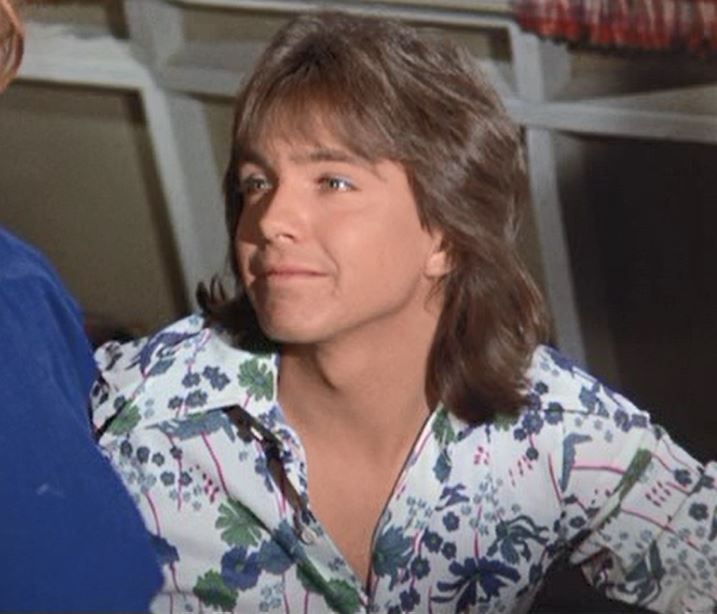
Later he switched to solid colored tops with round necks and long sleeves, usually in shades of brown, blue or marroon. When Keith Partridge began wearing puka shells, their sales skyrocketed.

Older Men
Solid pastel suits and sports coats were often worn. Many sports coats had checks or stripes.

Cardigan sweaters in brown, blue, or yellow were often worn over long-sleeved dress shirts.
Dress shirts were available in solid colors in every shade of the rainbow, as well as wild prints.
Rueben often wore sports coats with stripes. His favorite cardigan was a tan one with a bright blue dress shirt underneath.
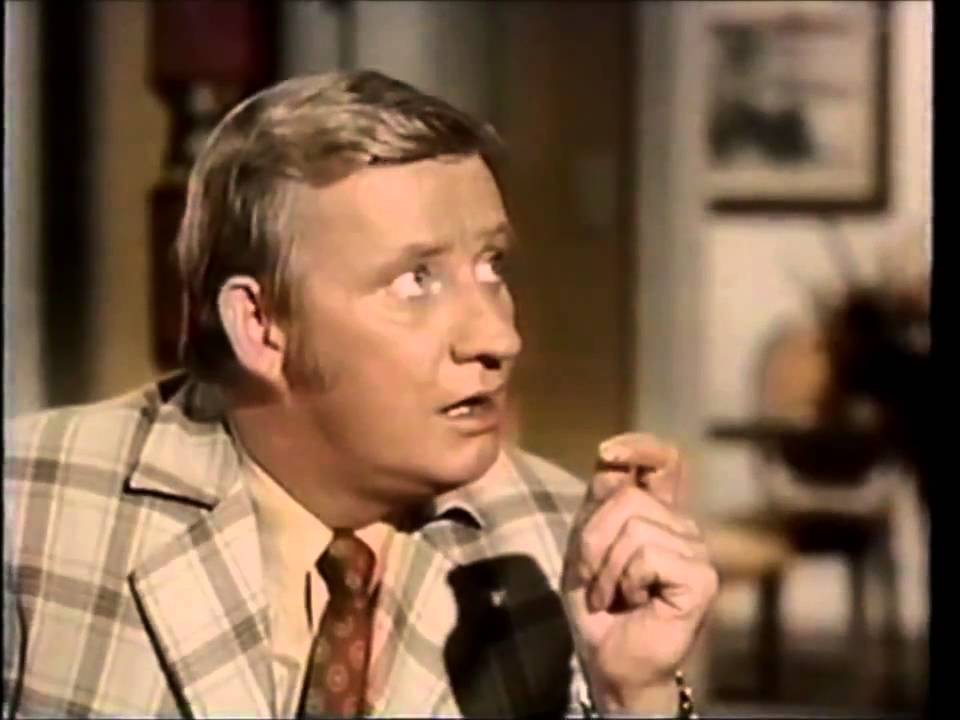
Footwear
Birkenstocks were introduced during this era. Boots were very popular. Go-go boots were still often worn with mini dresses, but lace-up granny style boots of leather were worn with longer skirts and dresses. Sandals were very popular with pants as were clogs. Earth shoes also made their debut in the 1970s in colors like navy, gray, burgundy, and cocoa. I have to confess I still have my navy blue earth shoes from seventh grade, and they are still comfortable.
Hairstyles
Longer hair was the norm for teen boys and girls, but short hair was not out of place. Young girls parted their hair in the middle. Bangs were also part of many hairstyles.

Older women and men tended to wear their hair shorter as well; women in their 50s and 60s would often put their hair in a bun. Pony tails and braids were ways to corral hair during hot weather. Afros were popular styles too. Shag haircuts were coming into vogue during the middle of the decade.
Kids’ Fashions
Kids’ fashions tended to be more mini versions of their parents and older brothers and sisters.

Girls wore matching pants and tops or dresses to school and jeans or other pants for play and after school wear. Often a scarf was worn on the head and tied under the chin that matched the dress. Boys wore solid short-sleeved shirts or striped shirts. Quarter zippers were often featured. They also had long-sleeved shirts like the older boys but in more solid colors or stripes.
When I was in fourth grade, we were allowed to start wearing pants to school but only if they had a matching tunic top, so that’s what my sister and I got for Christmas gifts that year. For weekends we wore jeans but not to school. It wasn’t until I moved to Wisconsin in 8th grade that I saw kids wearing Levis to school.
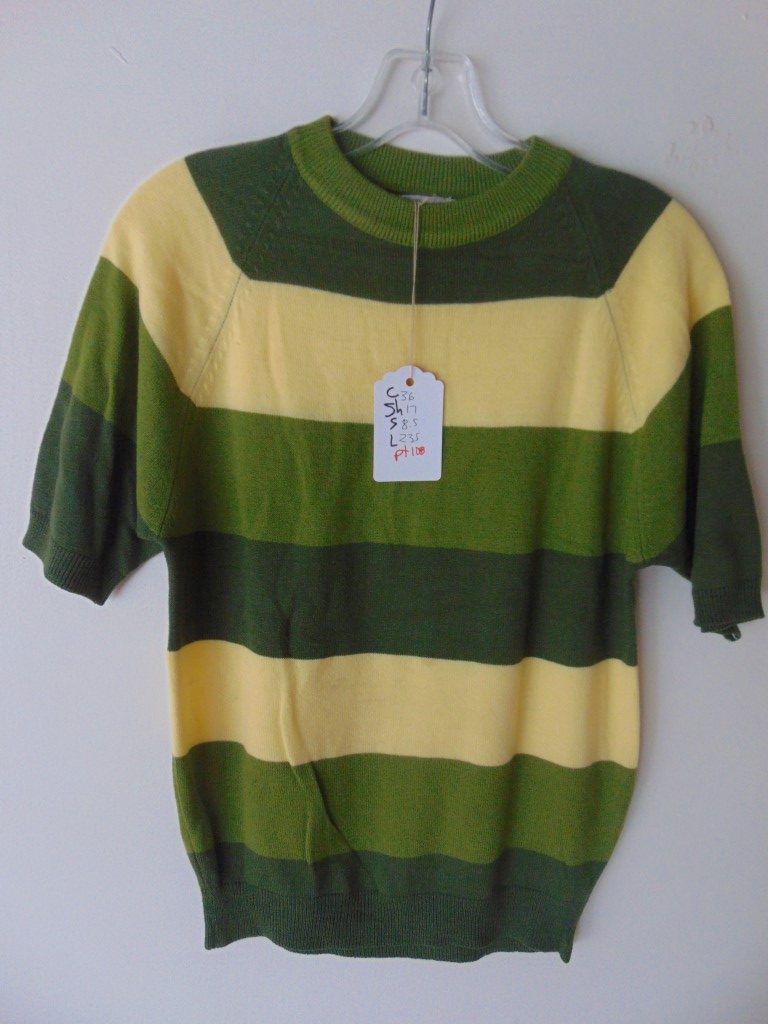
Olive green, gold, and brown were popular for boys. Girls also wore those colors but had more options with blues, pinks, purples, yellows, and bright colors to choose from. Girls wore colored knee socks with their dresses and skirts to school. Mood rings were a big hit in this decade.
Most of Danny’s shirts were short-sleeved tops in solid colors. His favorite was a solid brown top. Many of his shirts had a zipper in them.


One of Danny’s favorite outfits was a gold top with pants of brown, orange, and gold stripes.
Chris dressed much like Danny.The shirt Tracy is wearing below is very similar to shirts Laurie often wears. Tracy often wore pants with pastel tops. We didn’t see her or Chris or Danny at school, but I’m guessing she wore a lot of tops and skirts.

Conclusion
The clothes of the 1970s were identifiable but were not locked into one style. They were comfortable and natural for the most part.

Women still wore a lot of dresses and skirts, although pants were becoming very popular even for school and parties. There were many options for someone purchasing outfits in this decade for lengths, colors, designs, and prints.

Shoes and hairstyles also could be based on what the individual liked; there was not a “wrong” look. The Partridge Family gives us a great example of what the fashion was like during this time.

Their wardrobes were accurate and trendy but did not overshadow the characters. By concentrating on what each of the characters wore, we were able to learn a little more about them.

*All photos from pinterest.com unless otherwise noted.












